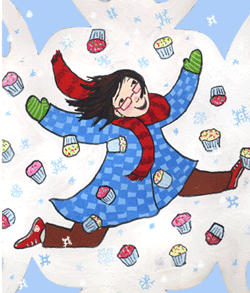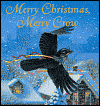Sunday, December 31, 2006
one more thing...
I should add in addition that Mona Lisa will be on audio next. The most fun part for me is finding music for these things.
meghan
aliens on audio sneak peek!
http://video.google.com/videoplay?docid=8546853252152139759
I don't know why I keep giving myself huge projects!
Happy New Year everyone.
meghan
Saturday, December 30, 2006
What are your resolutions?
1. I will not use reviews, royalty statements, marketing budgets or amazon rankings to determine the quality of my book(s) or ability.
2. I will not feel icky for marketing and promotion, I will accept it as part of this career. Emphasize "part." Meaning, I will not get down on myself for not doing more, as well.
3.I will be more patient with my beloved husband and remember that it is hard for others to realize that when you are staring out the window, you are working.
4. I will back up my files and keep all drafts of my writing.
5. I will celebrate small victories. An e-mail from a fan, a publication, a shiny foil cover are achievements that should be remembered.
6. I will not be late for any of my events, and will remember my tendency to get very lost more than 15 minutes before my expected arrival time.
7. I will not feel guilty about making money. Book sales, school visits, speaking fees, advances and royalties is how I make a living and support myself (and my husband). Just because it's for children doesn't mean I should do it for free.
8. I will spend less time blogging!!
Friday, December 29, 2006
POETRY FRIDAY: A Gift of Poetry
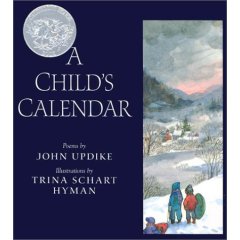
A CHILD'S CALENDAR
Written by John Updike
Illustrated by Trina Schart Hyman
Published by Holiday House (1999)
One of my grandnephews was so excited on Christmas Eve when he handed me the present he said he had picked out especially for me at my favorite children’s bookshop. When I visited the shop a few days later, the owner—who is a friend—told me how my grandnephew had spent time talking to her and getting her advice about the kinds of books I liked best. He also explained to her how he had to keep within his budget.
George looked so proud of himself Sunday night when I unwrapped the paperback copy of John Updike’s A CHILD’S CALENDAR. His mother, my niece, told me the owner of the bookshop said I could return the book if I already owned a copy. Well…I did have two hardcover copies—one of them signed by the author. I didn’t care. My new paperback copy of A CHILD’S CALENDAR holds a special place in my heart. It is a gift of poetry from someone who is dear to me. My second hardcover copy holds a special place in my heart, too. It was given to me several years ago by one of my second grade students—a young girl who had come to love poetry over the course of the school year.
I own duplicates of dozens of children’s poetry books. Some I have bought. Some of them were gifts from family, friends, and students who appreciated my love of poetry. I was actually happy to receive a second copy of favorite poetry books I already owned. That meant I could keep one copy of each of them at home where they wouldn’t get battered and worn from use in my classroom.
Now I can look at all the books of poetry I have received from others and remember their givers. I think of sweet little blond-haired Julie, the daughter of our school’s head custodian. I can picture Caroline—the tall, broad-shouldered, tough-as-nails-on-the-outside girl who was really tender and sensitive on the inside. I remember energetic Nicky who got hooked on poetry, especially the poems of Karla Kuskin. I remember, too, how my good friend and teaching colleague Dotty got my poetry collection started about thirty years ago with gifts of THE RANDOM HOUSE BOOK OF POETRY FOR CHILDREN and Shel Silverstein’s A LIGHT IN THE ATTIC. And I have fond memories of the late David McCord who gave me the gift not only of his poetry books for children—but also of his friendship and his support for my dream of becoming a children’s poet one day.



I was fortunate to have chosen a career in teaching—a career that brought me to children’s poetry. It was the reading and writing of poetry across the curriculum with my students that brought me closer to them and strengthened the teacher-pupil bond. The wonderful poetry my students wrote in class was a true reward for me. It was a reaffirmation of my belief that poetry should not be considered a subject apart from other curricula. I observed how it provided my students with a heightened vision of the other subjects they were studying in class. It also gave them an outlet for creative expression of their inner feelings and thoughts.
In looking into the past and thinking about my years of teaching young children, I see how poetry gradually became such an important part of my life and of my students’ educational experience in my classroom. Poetry enriched our days. It was a gift we shared—a gift I hope they will keep for a lifetime.
(NOTE: The original edition of A CHILD’S CALENDAR was illustrated by Nancy Ekholm Burkert and was published by Alfred A. Knopf in 1965. I own a copy of that book, too. Trina Schart Hyman illustrated the 1999 edition. She received a Caldecott Honor Award for her art in the book. Updike made a few minor changes to some of the poems in the newer edition—but for the most part the poetry remains true to its earlier edition.)
POEMS FOR A NEW YEAR
Here are two poems written especially for a “new year” and a poem by Sara Coleridge that takes us through a calendar year from January to December.
NEW YEAR’S DAY
by Rachel Field
Last night, while we were fast asleep,
The old year went away.
It can’t come back again because
A new one’s come to stay.
RING OUT, WILD BELLS
by Alfred Lord Tennyson
Ring out, wild bells, to the wild sky,
The flying cloud, the frosty light;
The year is dying in the night;
Ring out, wild bells, let him die.
Ring out the old, ring in the new,
Ring, happy bells, across the snow;
The year is going, let him go;
Ring out the false, ring in the true.
THE MONTHS
by Sara Coleridge
January brings the snow,
Makes our feet and fingers glow.
February brings the rain,
Thaws the frozen lake again.
March brings breezes, loud and shrill,
To stir the dancing daffodil.
April brings the primrose sweet,
Scatters daisies at our feet.
May brings flocks of pretty lambs,
Skipping by their fleecy dams.
June brings tulips, lilies, roses,
Fills the children’s hands with posies.
Hoy July brings cooling showers,
Apricots and gillyflowers.
August brings the sheaves of corn,
Then the harvest home is borne.
Warm September brings the fruit;
Sportsmen then begin to shoot.
Fresh October brings the pheasant;
Then to gather nuts is pleasant.
Dull November brings the blast;
Then the leaves are whirling fast.
Chill December brings the sleet,
Blazing fire, and Christmas treat.
HAPPY NEW YEAR!
Tuesday, December 26, 2006
bored
So is there a happy medium? Is this part of the author curse?
meghan aka bored author, illustrator, wanna-be-song-writer/singer plus my new insane idea-- doctor (yeah, no one thinks I could ever...)
Three Silly Chicks & a Chicken Poem
Everybody’s In! is the only silly poem I could find with any reference to chickens. I now dedicate the poem to the Three Silly Chicks: Andrea Beaty, Julia Durango, and Carolyn Crimi.
EVERBODY’S IN!
(An old moldering poem by Elaine Magliaro)
The cows are in the pasture,
The sheep down in the glen,
The dog is dozing in the sun,
The pigs are in their pen.
The bees are busy in their hive,
The ducks are in the pond.
The chickens? All are in the coop—
Except for one…that’s in the soup!
Andrea, Julia, and Carolyn: I hope you have a fine—not foul—NEW YEAR!
The Day after Christmas
The poem is entitled December 26. It was written by Ken Nesbitt.
Saturday, December 23, 2006
Friday, December 22, 2006
POETRY FRIDAY: Christmas Poems

CHRISTMAS IS A-COMING
English Nursery Rhyme
Christmas is a-coming,
The goose is getting fat,
Please to put a penny
In an old man’s hat.
If you haven’t got a penny,
A ha’penny will do.
If you haven’t got a ha’penny,
God bless you!
FOR ALLAN
Who wanted to see how I wrote a poem
by Robert Frost
Among these mountains, do you know.
I have a farm, and on it grow
A thousand lovely Christmas trees.
I’d like to send you one of these,
But it’s against the laws.
A man may give a little boy
A book, a useful knife, a toy,
Or even a rhyme like this by me
(I wrote it just like this you see),
But nobody may give a tree
Excepting Santa Claus.
DAY BEFORE CHRISTMAS
by Marchette Chute
We have been helping with the cake
And licking out the pan,
And wrapping up our packages
As neatly as we can.
And we have hung our stockings up
Beside the open grate.
And now there’s nothing more to do
Except
to
wait!
CAROL OF THE BROWN KING
by Langston Hughes
Of the three Wise Men
Who came to the King,
One was a brown man,
So they sing.
Of the three Wise men
Who followed the Star,
One was a brown king
From afar.
They brought fine gifts
Of spices and gold
In jeweled boxes
Of beauty untold.
Unto His humble
Manger they came
And bowed their heads
In Jesus’ name.
Three Wise men,
One dark like me—
Part of His
Nativity.
From MARMION
by Sir Walter Scott
Heap on more wood!—the wind is chill;
But let it whistle as it will,
We’ll keep our Christmas merry still.
CHRISTMAS
by Marchette Chute
My goodness, my goodness,
It’s Christmas again.
The bells are all ringing.
I do not know when
I’ve been so excited.
The tree is all fixed.
The candles are lighted,
The pudding is mixed.
The wreath’s on the door
And the carols are sung.
The presents are wrapped
And the holly is hung.
The turkey is sitting
All safe in its pan,
And I am behaving
As calm as I can.
I HEARD THE BELLS ON CHRISTMAS DAY
by Henry Wadsworth Longfellow
I heard the bells on Christmas day
Their old familiar carols play,
And wild and sweet
The words repeat
Of peace on earth, good will to men!
And thought how, as the day had come,
The belfries of all Christendom
Had rolled along
The unbroken song
Of peace on earth, good will to men!
Till, ringing, singing, on its way,
The world revolved from night to day,
A voice, a chime,
A chant sublime
Of peace on earth, good will to men!
HAPPY HOLIDAYS!

Thursday, December 21, 2006
back from the dead... or the other side of the earth
Well, dear readers, I am all most done .
Ugh.
The problem with doing a nonfiction book is that it is never really done until it goes to print. I'm constantly fact checking... and other people are fact checking... and there are the little details... the author's note... and so on. I'm not saying that fiction is easier, but it is easier for me in lots of ways. It's a lot less work. I feel like I'm back in school lots of times now--Staying up and writing those late night papers.
The school comment reminds me of when I was in my early years. As I've admitted before, I sometimes google myself. What I find the most exciting is seeing my book on reading lists. Kids across the country are using my books to learn! When I was a youngster I was not a stellar student. I did a bit too much daydreaming. It makes me giddy to think that someone like me can be making books that kids are using in school. Wow.
Since I am almost done with my book my insane goals for before Christmas include--
1) Making my usual "Christmas" music mix (no, there is no Christmas music on it)
2) Finishing up one of my many half songs that I've been making on garage band (perhaps if I get the guts I'll share one of them with you all. Maybe).
3) Finishing "aliens on audio" before the end of the month
4) Putting up a preview for my new books...and for Mona Lisa, which needs to be highlighted on my site (I wanted to do this 3 months ago!)
5) Relax for god sake! What is wrong with me? I need a break! Why am I adding more goals on?
Okay, the list above is more like me talking to myself so I'm done with the blog for now. When I start "thinking" out loud I know it's time to move on. Stay tuned for some funny comments on my proofs. I have some other book process things to share as well.
until then
meghan
p.s- why are there some many ads about Chia Pet late at night this month? Does it make for a wonderful holiday gift? Is that why? Do I need one?
Wednesday, December 20, 2006
Bless us each and every one!

This is a Christmas book because part of the story takes place on Christmas Eve, when, according to legend, all the animals can talk. The Tailor of Gloucter was Beatrix Potter’s own favorite of her books, and you can see the coat the tailor is making in the Victoria and Albert Museum. I won’t spoil the charm and surprise of the story by saying anything more about it…..except maybe that if I had children, we would probably read this out loud on Christmas Eve (and maybe the Mr. Edwards scene in Little House on the Prairie?) Or maybe both!
A child I know once insisted that I watch the Muppets version of A Christmas Carol with her:
“You think you’ll hate it, but you’ll love it,” she said. She knew me well. Michael Caine’s performance made me understand the story in a way I never had before – especially Scrooge’s joy at the end. If you’ve never read the book, it might surprise you: the conversation between the old ladies who are laying out the corpse and counting out its possessions especially.

I mention that scene to try and show that A Christmas Carol is not what some people think it is – any more than the Muppets version was what I imagined it would be. Dickens isn’t one of my favorite writers, but I do love this book (and A Magic Fishbone and the childhood chapters of David Copperfield).
Merry Christmas to all and “God bless us each and every one!”
--Libby
Linda Sue Park weighs in
Tuesday, December 19, 2006
Reference
Now that I am painting human characters though, its a whole different ball game! First of all, the story I am working on now is based on actual historical events... so things like clothing styles and architecture need to represent the time period they come from. This is not always an easy task! Last week I spent an entire afternoon trying to figure out what type of nightgown a child slave would have worn in the 1830's. Many slept naked, but I can't draw that (if everyone was up in arms over IN THE NIGHT KITCHEN, I can only imagine how that would go over).
At last I found a web site with patterns from the 19th century, and indeed they had a nightgown. But is that what a slave would have owned? I have about 20 books out from the library about slavery, many with pictures, but no one sleeping! At times, I read, slaves would be given worn out castoff clothing from the families they worked for, so I suppose that what I have will suffice. Sometimes its hard to know where to draw the line with accuracy- I want the illustrations to completely honor the story by being as accurate as possible, but if I spend weeks researching minute details I will never make my deadline!
Another very important use of reference material is for anatomical details. Hands and feet will always baffle me and take the most amount of time in a painting; they are so complex with so many small moving parts. Fortunately I have very cooperative roommates that let me borrow their hands when I am stuck with a painting. For instance:
When I was ready to tighten up a sketch and start painting, I took this picture of my roommate's hand:

Since the character is black, I needed some reference for skin tone, so I found this picture on the internet (love you google):

Using roughly the gesture from the photo I took, and the shades of color from the one I found, I painted this:
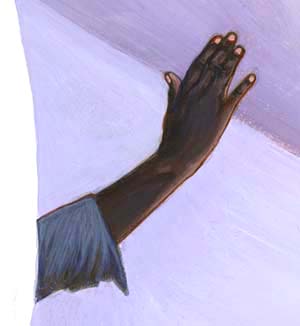
I don't always borrow quite so directly, sometimes I can approximate a gesture based on similar ones, or modeling myself (though its hard to draw your own hand without a photo). Just one more way that making a book is like a big puzzle, you try to weave together lots of little parts to create a whole that is its own.
Monday, December 18, 2006
MORE HANUKKAH BOOKS TO SHARE
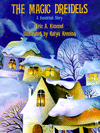
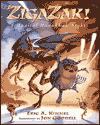

Susan is compiling a great list of Hanukkah books at Chicken Spaghetti in her “The Eating of Latkes: Hurray for Hanukkah” post. She welcomes recommendations from other children’s book lovers.
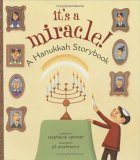
Esme has some excellent suggestions for Hanukkah books at The Planet Esme in “Come Light the Menorah!”
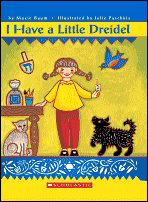
And Jules at Seven Impossible Things has a review of a new Hanukkah book, I HAVE A LITTLE DREIDEL, in “New Holiday Titles, Act Three.” The book was written by Maxie Baum and
illustrated by Julie Paschkis.
I love to cry
I just wanted to answer the "Books that made you cry" question. As I've sometimes announced at conferences, I'm a sucker for books that make me cry. And movies that make me cry. And tv shows and commercials that make me cry. And people that make me...er, just kidding. On the other hand, although I love humor and chuckle and smile at what I watch and read, it's harder to make me really laugh out loud than it is to make me cry.
I've wondered why this is, and I think it's because I'm a basically happy person who has had a basically happy life, and therefore I enjoy letting out my sadness when prompted by outside stimuli, such as books.
So, the one book that made me cry the most as a kid?
Where the Red Fern Grows by Wilson Rawls
(yes, I know, one of those books where dogs die...)
Other books that I strongly remember making me cry, and I mean really cry as a kid:
A Taste of Blackberries by Doris Buchanan Smith
You Shouldn't Have to Say Good-Bye by Patricia Hermes
My Brother Sam is Dead by James Lincoln Collier
Summer of My German Soldier by Bette Greene
Oddly, I never cried while reading Little Women, even though it's one of my favorite all-time books. I don't know why.
And a book that have made me sob recently?: The Book Thief by Markus Zusak
I edited a beautiful book that is certainly a tearjerker. The book is called Rubber Houses by Ellen Yeomans (January 2007), and it's a poetry novel about a teen girl and her little brother and... well, you can guess what happens. I read this submission two or so years ago while at work one afternoon, and it made me sob at least three different times--there I was in my office, sniffling and crying and blowing my nose. It's beautiful, moving, and real. Perhaps too real and sad for some adult readers (Kirkus rears its ugly head again), but I think it's lovely and cathartic. We've been getting some great feedback from our hip scouts:
"Rubber Houses is virtually impossible to put down, it’s a very quick read with a deep storyline. Despite their age difference, Kit and Buddy's relationship is one that everyone wishes they had with their siblings. Once Buddy's illness beings to progress, you feel strongly for Kit and how hard it is for her. Definitely recommended for readers age 12-15."
-Samantha, 17
"This book will make anyone with a younger sibling cry. I usually hate free verse, but in Rubber Houses it really captures the emotions of worry, anger, disbelief, loss, drifting, and renewal that Kit experiences after her younger brother dies suddenly of cancer. Though a short read, it's an eye-opener for all of us who think these things won't happen to us. The book also has surprising insight into the relations between teens and their parents, and the deep rifts in "normal" families as Kit struggles to reconnect with her parents after Buddy's death."
~Elizabeth, 16
"To put it simply, Rubber Houses is gut-wrenching. Do you have a younger sibling? After reading this book I can guarentee you will want to hug them and apologize for all the goodbyes that were missing an "I love you." Written in poetry form, it's a quick and easy read, but every page holds the emotion of most novels. Addicting and never slow, this is a must read, but keep the tissues close."
-Heather, 18
I couldn't have said it better myself. Obviously these teens are future book reviewers (maybe for Kirkus?). I wish I could hire them to write my flap copy--I'll probably never be nominated for a Flappy.
Happy holidays, everyone! Do you enjoy books that make you cry? Any recommendations?
Sunday, December 17, 2006
Ordinary
 Last spring, I remember feeling pangs of guilt during Linda Sue Park’s speech at the NE SCBWI conference. Her speech was lovely, challenging authors to “raise the bar” and to publish and strive for works only of exception and excellence. However, instead of feeling inspired, I began to feel a bit like a worm. I began to worry that my work was too self-indulgent and not of the quality she suggested. That instead of achieving excellence, perhaps I was excellent at achieving mediocrity.
Last spring, I remember feeling pangs of guilt during Linda Sue Park’s speech at the NE SCBWI conference. Her speech was lovely, challenging authors to “raise the bar” and to publish and strive for works only of exception and excellence. However, instead of feeling inspired, I began to feel a bit like a worm. I began to worry that my work was too self-indulgent and not of the quality she suggested. That instead of achieving excellence, perhaps I was excellent at achieving mediocrity.This caused a freezing reaction. Suddenly, every book idea, every sentence written was weighed and measured and coming up short. Was it deep enough? Was it important enough? Was it crafted enough?
And suddenly, my writing became terribly boring.
But the rediscovery of one of the books I read as a child, The Ordinary Princess thawed me out. In the book, Princess Amethyst is cursed/blessed by her fairy godmother to be “ordinary.” Her golden hair turns mousy brown, her nose upturns and she bawls and burps in a manner most unbecoming to a royal highness. But in the end, she finds her happy ending and everyone—including the reader—is grateful and delighted at her ordinariness.
Even though this book was well-written, it never won any awards or was considered a work of great literature. And it didn’t bring me to tears or change my life. In fact, there were even other books out there that had similar themes and storylines.
But as a child, that didn’t matter to me. All that mattered was that I enjoyed this book and it satisfied me. Enough so that over 20 years later, I still remember it.
As book creators, I think there are many times that we are too hard on ourselves. How often have I reread my writing and been disgusted? How often do we decide not to write or draw something because we don’t think it will be “good enough?”
Because the truth is there is room in a child’s reading world for all kinds of books, with varying degrees of quality. In fact, their world would be quite bare without them. And that is what relaxes me when I feel the pressure of my ambitions. So while I will continue to strive to create extraordinary literature, I can be content with making an ordinary good book, too.
Friday, December 15, 2006
POETRY FRIDAY: Winter Lights & Christmas Trees

WINTER LIGHTS: A SEASON IN POEMS & QUILTS
Written and illustrated by Anna Grossnickle Hines
Published by Greenwillow Book (2005)

Don’t let the cover illustration of a Christmas tree lead you to infer that WINTER LIGHTS contains poetry only about the Christmas holiday. This book includes poems about the winter solstice, Kwanzaa, a Hanukkah menorah, Chinese New Year, the early setting of the sun, and the aurora borealis. Hines “enlightens” us with her multi-faceted look at the natural light and manmade light that brighten the winter season.
Anna Grossnickle Hines received the 2002 Lee Bennett Hopkins Award for Children’s Poetry for PIECES: A YEAR IN POEMS & QUILTS, her wonderful book of seasonal poetry. WINTER LIGHTS is a fine follow-up to that award-winner. While the poetry in this book is not as strong as that in PIECES, I recommend the book without hesitation. Like PIECES, WINTER LIGHTS is also illustrated with the author’s sewn artistry—magnificent quilts, some of which can be described as dazzling. To illustrate logs burning in a fireplace, the flickering flame of a candle, lines of farolitos glowing in the dark, Christmas lights “twinkling on rooftops” at night, and a full moon shining in a winter sky, Hines stitched pieces of yellow, red, orange, and white fabric on dark cloth backgrounds. And the designs in which Hines sewed pieces of brightly colored material do give the impression of a flickering candle flame and firelight and an icicle glistening with little stars of reflected sunlight.
Hines is a creative artist with words as well as with cloth and needles. In Star Catcher, the book’s first poem, she writes about an icicle that, while growing overnight, captured stars—then how, in the sunlight, it set the stars free again. What an imaginative way to think about an icicle. Her poem about different colored lights blinking and twinkling and sparkling on a Christmas tree is written in the shape of a Christmas tree. In Lights Out, she writes about a child pretending to be asleep—a child who is deliciously reading a book under the bedcovers with the help of a flashlight. Here are excerpts from two of the poems in WINTER LIGHTS.
From Nian is Coming, a poem about Chinese New Year:
Lurking at New Year,
he waits for his chance.
Hang the red paper
to scare him away.
Stomp with the lions!
Burn the bamboo!
With streamers of fire
we light up the skies!
The final poem in WINTER LIGHTS is about an inanimate artist that paints shadows on the snow-covered ground at night:
From Artist:
It’s high overhead,
but far below
the moon paints pictures
on the blue-white snow.
At the end of the book, Hines includes information about the winter “light” traditions of different cultures. She also provides illustrated descriptions of how she made her quilts for the book.
WINTER LIGHTS: A SEASON IN POEMS & QUILTS is definitely a book that shines brightly in words and pictures. And it’s written and illustrated by a truly talented “Material Girl.”
A CITY CHRISTMAS TREE
Written and illustrated by Rebecca Bond
Published by Little, Brown (2005)

Some picture books are poetic in nature—their texts have a lyrical quality. There is a rhythm to the author’s writing—writing that may also be rich with sensory images and figurative language. Rebecca Bond’s text in A CITY CHRISTMAS TREE has a poetic rhythm. It has refrains and repetition and some lovely use of language. But, before I provide you with excerpts of Bond’s writing, let me explain the simple storyline.
This is a cumulative tale about an interracial family—a tale in which we are told what a city Christmas tree means to the different members of this family. First, we meet Maggie Laroche twirling down the street on Monday to the end of her block where she sees a man selling Christmas trees. This gets her to thinking about the smell of city Christmas trees and what the foresty scent brings to mind. This same thing happens to other members of her family when Maggie brings them down to the end of the block. On Tuesday she brings her brother Teddy; on Wednesday she brings Teddy and her brother Lucas; on Thursday she brings Teddy, Lucas, and her sister Ellie; and on Friday she comes with all her siblings and her parents. Her parents purchase a Christmas tree on Friday and all six carry “it merrily home.” On Saturday, more family members arrive at the Laroche’s apartment in the city—and everyone celebrates the Christmas holiday together.
Here is how Bond begins her happy family tale:
“When the Christmas tree man set up his shop
on Liberty Street at the end of the block,
it started the city all dreaming great dreams…”
To Maggie, the smell of a city Christmas tree…
“…was wild and windy.
It spiced up the air with the freshest of zest,
like a day in the spray of the sea.”
To Teddy a city Christmas tree…
“…was the color,
the deeply, densely green-blue hue.
He felt he was home in the heart of the woods,
all brightly and lushly alive.”
To Lucas it was the tree lights that “dazzled and glittered like lantern-lit globes.”
To Ellie, it was an angel “with her marvelous wings and her butterfly grace.”
I have read poetry books that have less poetic language in them than can be found on the pages of this simple and satisfying tale. There is even visual poetry in some of the book’s illustrations—in the pastel-colored two-page spread of the children standing on rooftops looking up at yellow, green, and pink lights swirling in the sky over their city and in the picture of Maggie sailing her billowed-sailed boat over a wind-whipped sea. You won’t find many straight lines or sharp angles in Bond’s art. No, she favors more natural rounded shapes. We see curves in the swirling waves of the sea and bow of Maggie’s boat, in Maggie’s arms flung up in celebration, in the outspread wings of an angel, in a building at the end of a city block, in the rooftops of row houses.
It is the rounded shapes, the color palette Bond used, the body language and happy facial expressions of the people pictured in the illustrations that depict Maggie’s city as one that is warm and welcoming—as a city where people like Maggie, her siblings, and parents can fulfill their dreams of a happy Christmas and family closeness.
Wednesday, December 13, 2006
Chowder on Martha!
Chowder by Peter Brown, will be a recommended holiday gift by Martha Stewart on her tv show! It'll be on in most areas tomorrow (Thursday,12/14/06) at 10 am on NBC, but check your local listings and tune in!
Unfortunately, Chowder has been selling so well that our warehouse has been out of stock for about a month (I know, I know, bad timing for the holidays--the reprint is due in mid-January), and Amazon.com and bn.com are out, too, but it should still be available at a local bookstore near you! Check out Book Sense for availability.
MYSTIC PIZZA
So what makes a space good to work in? When I lived in Boston, I had a small apartment in Back Bay. My desk was in a bay window – to the left, I saw a playground, to the right, a private school; and all day long in front, children walking from schools and day care centers TO that playground. No two children ever moved the same way – they hopped, skipped, jumped, ran, danced – forwards backwards sideways – holding hands, by themselves, grabbing or tagging or leaning on each other; the high energy was the only constant. The room had high ceilings and EIGHT huge windows and was filled with light. This was a perfect writing space (except for the rent)....the Hollywood version is the apartment in FEVER PITCH--needless to say it looked NOTHING like my apartment, but the real front steps are in the movie and my apt. was what they used to place the windows etc. Supposedly. I never did actually see what friends called "the movie about Libby's apartment" but they reported that it looked nothing like mine.
 ….. and next week I’m moving to another movie site. This is the new space as it looks right now --
….. and next week I’m moving to another movie site. This is the new space as it looks right now -- 
imagine it painted either sunny or pale lemon yellow.
The apartment has: ten windows, South light, a view (okay, slightly industrial & including a water tower but still a view) of the Mystic River; and a real old-fashioned window seat – you can't see it in the picture,but it's there: the top lifts up and there is storage space underneath…..and there are plenty of walls for my 12 (perhaps soon to be 13 now that I have the space?) bookshelves.
But what really makes this a good space for me to work in is the light -- and the sense and feeling of space: not just all around me and to look at, but drawers and cupboards where I can stow all my stuff. Light and open space are what I want most in a workspace. What about you?
aliens on audio!
I'm wasting even more time by making a teaser for it on my website. Of course, it's not on the website yet. There are no pictures. Just sound.
http://video.google.com/videoplay?docid=-2502954496619028021
I haven't decided what kind of video/slide show I want to make for it. My first thought was to video people walking down the street... they then pick up the pace... then you see feet chasing them... turns out it's a giant cardboard cut out of my book chasing people down he street... then the cut out trips and falls--then you see the backside and it says "on audio!"
It occurs to me now that I don't have a video camera. This would also involve getting people to film, etc. I guess I don't really have the time for this. My Pale Male book isn't done yet and another book is already up to the plate. Yikes!
Idea number 2--
I animate rough pen drawings on white paper (no color) of a giant alien stomping on cars and buildings and trees. Then in drippy type it reads "the aliens are coming!... on audio!"
It also occurs to me that I don't know how to animate things and don't have a program to do so.
So that's out.
Option number 3--
Who knows. Stay tuned!
This is how creative people procrastinate. They come up with other projects to do instead of the one they should be doing!
meghan
Tuesday, December 12, 2006
A HANUKKAH STORY TO SHARE

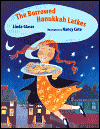
The Borrowed Hanukkah Latkes
Written by Linda Glaser
Illustrated by Nancy Cote
Published by Albert Whitman (1997)
THE BORROWED HANUKKAH LATKES became a favorite December read-aloud in my classroom the last few years I taught and in the library for the three years I served as our school’s librarian.
This picture book isn’t just about Hanukkah—it’s a story about family and tradition and about thinking of others who may be alone at a special time of the year. The story takes place on the last night of Hanukkah. A young girl named Rachel is the main character. As the story begins, Rachel’s mother is busy in the kitchen frying up batches of potato latkes for her family who will gather at their house to celebrate the holiday. As Rachel’s mother is preparing the meal, she receives a call from Miriam asking her if she can bring along Aunt Tilly and her seven grandchildren. Mama tells Miriam: “Of course. I’ll have plenty of latkes. Don’t worry.”
But that means there will now be seventeen people eating dinner in their tiny house—and it means Mama will have to cook a lot more latkes. Mama sends Rachel to the cellar to fetch a sack of potatoes. Alas, there are only three potatoes left—and they look pretty sick. It’s too late to go to the store. What can Mama do? She thinks about sending Rachel over to ask Mrs. Greenberg, their next-door neighbor, if they can borrow some potatoes. In the past, Rachel’s family had always invited Mrs. Greenberg, who lives alone, to join them for this Hanukkah meal. But Mrs. Greenberg, who has a “heart of gold” and is “stubborn as an ox,” always declines the invitation because she “thinks she’d be a bother.” But the generous Mrs. Greenberg had always offered: “If you need anything, just let me know.” Rachel suggests to her mother that maybe Mrs. Greenberg will join them for dinner if they borrow some of her potatoes.
Mrs. Greenberg gives Rachel a sack of potatoes, but refuses to accept the dinner invitation. She tells Rachel that her mother has enough work without adding one more person to the list of guests.
Soon after Rachel returns home with the potatoes, Mama realizes she has no more eggs. Rachel returns to Mrs. Greenberg’s house to borrow some eggs—and to encourage the elderly woman, once again, to join them for dinner. Mrs. Greenberg hands Rachel a carton of eggs and remarks that she feels more comfortable in her own house.
Soon enough, Rachel’s home is filled to bursting with people—all hugging and kissing and laughing. Unfortunately, there aren’t enough chairs for everyone to sit on at dinnertime. So Rachel runs to Mrs. Greenberg’s to ask if she can borrow chairs. While still at her neighbor’s, she has an idea. Rachel says to her friend, “We need room for all these chairs.” Then she says, “You have lots of room.” Mrs. Greenberg thinks awhile, gets the not-so-subtle hint and says, “You mean your guests should come and sit in my house?” Rachel replies, "That would be nice."
Mrs. Greenberg is quiet for some time. “So long that the walls got tired of waiting. And the rug couldn’t hold its breath anymore.” At last, she tells Rachel she’d love to have company for Hanukkah. So Rachel, her mother and father, and the rest of her family bring platters of potato latkes next door to share with Mrs. Greenberg in a happy holiday celebration.
This is a warm-hearted and uplifting story about a bright, determined young girl—just as stubborn and as kind as her white-haired neighbor—who uses her head to convince an elderly friend not to spend another Hanukkah alone.
Tis the season for crafts
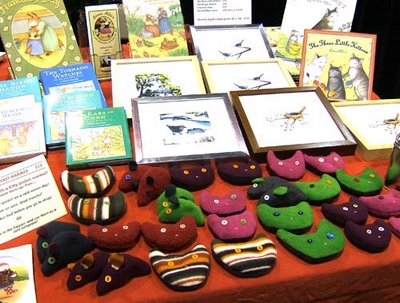 What do illustrators do when they're under deadline? Why, get crafty of course! This past weekend was the RISD holiday sale in Providence, RI. Its become a yearly tradition for several of us BRG to reserve a table (Grace and Meghan had one too) to sell books, prints, and whatever else we decide to carve out time to make.
What do illustrators do when they're under deadline? Why, get crafty of course! This past weekend was the RISD holiday sale in Providence, RI. Its become a yearly tradition for several of us BRG to reserve a table (Grace and Meghan had one too) to sell books, prints, and whatever else we decide to carve out time to make.This year I have been obsessed with sewing tiny little hand warmers (warmies) shaped like the characters in my books. They are filled with feed corn, so they can be zapped in the microwave to warm them up, then stuffed into pockets!
Its funny how sometimes doing something seemingly unrelated to illustration can get you fired up to work again. Sitting down with my sewing machine gets me in the mood to paint because I remember the simple, immediate satisfaction of making something you can hold in your hand. Painting is satisfying too, but in a long drawn-out way, and really only when you hold a printed book do you get that final sense of a project being finished.
So little distractions like this are necessary sometimes, to remember why I started painting in the first place.
Sunday, December 10, 2006
Turnover in the children's book publishing industry
The following question was posted anonymously in the comment section of my personal blog, but since it seemed more appropriate for this blog, I'm answering it here:
Eds, art directors, marketers, etc. move around a lot in the publishing biz. What is it like for you to be at a house for a while and to have people coming and going all the time? It seems as though inefficiency would be rampant. Do you find you have to get new folks up to speed often as you usher a ms through to publication? Why do you think people in the biz move around so much?
For the first three years I was at my house, I think only 2 or 3 people in all of the children's division left the company. Of course, at that time we were based in Boston, where publishing jobs were fewer and far between, so people tended to stay at their jobs forever. When the division was moved to NY 4 1/2 years ago, everything changed. First of all, we lost our entire Marketing and Publicity group, our entire Production Department, and all but one Designer. As I wrote about here, it was a tough transition period--and all of the turnover after that was a piece of cake--kinda. I think for me, it wasn't just the regular amount of turnover, but also the fact that we were growing. Boston's editorial department of ten people is now fourteen. Four designers have doubled into eight. The five-person marketing/publicity department is now nine. And yes, we've also had quite a bit of turnover, which I think is natural during transition periods. I got very used to seeing new faces in the office, and sadly, also saying goodbye.
I will say that sometimes as the one "left behind" it does make me wonder if I'm missing out by staying in the same place, or maybe missing the reason why people tend to leave all at once. I had a conversation with at least two other coworkers this year about whether we felt weird staying when everyone else was leaving, if it made us want to leave, too. And I also see people moving up more quickly than me, or people with less experience in higher positions in other companies. But then you remember how much you love your job, your coworkers who aren't leaving, the books you work on, and you know you're doing the right thing for you. As I think I may have mentioned in the past, I "follow my compass, not my clock." And if you look at the reasons why people left this year, out of the five people who left, only one left to go to the competition. One moved to France, one moved to Hawaii, one went back to school, and one moved to PA and is now a professor. Why would I leave my dream job?
I don't think inefficiency is rampant at all. In fact, just the opposite. The people who remain pick up the slack and are forced to work either more efficiently and/or longer hours than before to make up for being short-staffed, or taking time to train new employees. Sure, there are tough transition periods, and I can't say that some books didn't suffer due to staff changes. But everyone was committed to getting the books on our list published in the best possible way. And there are positives that come out of turnover, too: new staff brought a welcome fresh perspective to our company and made us even stronger, made the other employees more invigorated. As with anything, it's good to mix things up a bit every now and then so you don't get too set in your ways.
On the other hand, I think we have a nice balance of old and new. Three of us in editorial: me, one of our editorial directors, and our publisher, have been with the company since we were editorial assistants (I think over seven, ten, and fifteen years respectively), and we bring with us the knowledge of our backlist and how things used to be done, and how so much of our procedures are more streamlined and effective now.
I've certainly done my fair share of getting new staff trained and up-to-speed, but even new employees had much to contribute, and could perhaps take over more duties from me that they could dive into right way, such as manuscript reading for example, while I got them up to speed on other procedures and responsibilities.
And finally, why do I think people in the biz move around so much? Do they, really? I've never worked in any other industry aside from retail at B&N, and certainly there was more turnover there than in publishing. People move around in every industry for the same reasons--to get a higher position, more pay, change departments, change industries, get married, have kids, because of problems with their bosses or problems with their coworkers. I don't think people move around in children's book publishing more so than in other industries.
If in fact there IS more turnover in children's book publishing than in other industries, perhaps it can be attributed to the fact that so many of the staff are young and female. This has been discussed on several other blogs, and I posted my response to the issue here. I think women are perhaps more likely than men to move for their spouses who most likely make more money, or leave if they decide to start a family. The low pay is also a factor--people may be eager to either move up more quickly into higher-paying positions, and sometimes the only way to do that is to move companies.
Anyway, I know I may be naive and overly optimistic sometimes, but when I look at our staff today, I think we're probably the best, most stable we've ever had, and it seems to me that most everyone is really happy there doing what they do. Of course there will be changes in the future, but I hope we stay this way for a little while.
oops

Sorry, not a real post today. We had a blue rose girl dinner gathering yesterday so it was a late night! I've been insane with busy-ness and stress, last night's dinner reminded me of this quote:
The statistics on sanity are that one out of every four Americans is suffering from some form of mental illness. Think of your three best friends. If they're okay, then it's you.
-Rita Mae Brown
Friday, December 08, 2006
POETRY FRIDAY: Christmas Stories in Verse
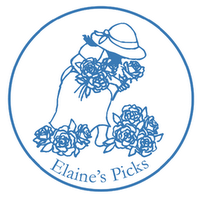
 Instead of reviewing poetry books for Poetry Friday this week, I thought I would write about three picture books—all Christmas stories that are told in verse. One tale is an oldie that was first published in the 1960s. That oldie is none other than…
Instead of reviewing poetry books for Poetry Friday this week, I thought I would write about three picture books—all Christmas stories that are told in verse. One tale is an oldie that was first published in the 1960s. That oldie is none other than…MR. WILLOWBY’S CHRISTMAS TREE
Written and illustrated by Robert Barry
Published by Doubleday
The original edition of MR. WILLOWBY’S CHRISTMAS TREE had illustrations done in black, white, and green. The new edition, published in 2000, is larger in size and has full color illustrations. In my opinion, MR. WILLOWBY’S CHRISTMAS TREE is definitely a holiday classic.
The book begins:
Mr. Willowby’s Christmas tree
Came by special delivery.
Full and fresh and glistening green—
The biggest tree he had ever seen.
Even a young child can look at the first illustration of a delivery truck rolling up the driveway to Mr. Willowby’s grand mansion and surmise that Mr. W. must be a man of means. But the giant Christmas tree that has been delivered to his house is even too tall for Mr. Willowby’s high-ceilinged parlor. There’s only one thing to do: Cut off the top of the tree so it won’t bend “like a bow.” Baxter, the butler, snips off the tree’s top and brings it to the upstairs maid, Miss Adelaide, who sets it on a table in her room. The top will be HER little Christmas tree—but, alas, it’s too tall to fit in her servant’s quarters. So…Miss Adelaide snips off the top, and it is put out in the trash.
The next day…
That little treetop caught the eye
Of Timm, the gardener, passing by.
Timm takes the treetop back to his house—and, lo and behold, it’s too big for his snug cottage! His wife trims off the top and throws it out.
And so it goes through most of the story. Barnaby Bear, Frisky Fox, and Benjamin Rabbit come along in turn, find the discarded treetop, and take it home only to find it’s too tall for their humble abodes. Each time the top of the tree is trimmed off and tossed outside onto the snow.
Finally, Mistletoe Mouse notices the tiniest tiptop of the tree lying on the snow-covered ground near the opening to Benjamin Rabbit’s burrow. He brings it to his cozy little home—and it’s JUST THE RIGHT SIZE! The mouse family is elated.
Then at the top, if you please,
They put a star made out of cheese.
In the illustration on the last page of the story, we see Mr. Willowby dozing in his high back wingchair next to his candle-lit tree. And what do we spy just behind his chair at the bottom of the picture? Why, three little mice joyously dancing around their tiny, star-topped Christmas tree as light glows out from their mouse hole onto the floor of the elegant mansion’s parlor.
Oh, wasn’t it grand to have a tree—
Exactly like Mr. Willowby?
Robert’s Barry’s art for this book works hand in hand with the text. The illustrations are set against a white background, which echoes the snow-white world surrounding Mr. Willowby's mansion and the homes of all the other characters. The new full color illustrations are brighter and more cheerful than those in the original edition. MR. WILLOWBY’S CHRISTMAS TREE is one fine read-aloud for the holiday season. The story is akin to the cumulative tales that are so popular with young children. I loved sharing this book with kindergartners in my school library.
After the reading of MR. WILLOWBY’S CHRISTMAS TREE, I used to do a little sequencing activity with my students. On large chart paper, I printed Mr. Willowby’s name. Then the children and I discussed how Mr. Willowby’s tree was too tall for his parlor—and how the butler had to trim off the top. Next, I told the children to think about all the story characters that had been given or found a part of Mr. Willowby’s tree and had taken it home to decorate. I encouraged them to “think hard” so they could give the names of the characters in the correct order.
As children provided the names of the characters in order, I listed them on the chart paper:
- Miss Adelaide
- Timm, the gardener
- Barnaby Bear
- Frisky Fox
- Benjamin Rabbit
- Mistletoe Mouse
I then asked the children if they noticed anything in particular about the order of the animal characters on the list. Usually one or two perceptive children in each class noticed that the size of animals got progressively smaller. It was always fun seeing young children get so excited about a story I had read them and so eager to participate in a discussion about it. That is one thing I miss most in retirement.
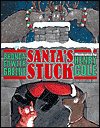
SANTA’S STUCK
Written by Rhonda Growler Greene
Illustrated by Henry Cole
Published by Dutton Children’s Books (2004)
SANTA’S STUCK is a rollickingly funny tale of a gluttonous Santa Claus who can’t resist nibbling on a myriad of holiday goodies set out at one house he’s visited on Christmas Eve. So he decides to take a snack break and rest awhile. He settles into a comfy chair, puts his “weary” feet up on a table, and indulges himself with cookies, fruitcake, and fudge…until…
Belly bulges. Santa stops.
Uh-oh! Look! A button pops!
Restless reindeer. Cold wind blows…
Up the chimney, Santa goes…
Well, Santa tries to go back up the chimney—but finds his girth is now too wide! His reindeer on the rooftop try to pull him up. BUT…
No-o-o-o-o luck—
Santa’s stuck!
Next, the house pets—one dog and six cats—try to push the not-so-jolly gift giver up the chimney. Once again…
No-o-o-o-o luck—
Santa’s stuck!
Then a tiny mouse “scampers out to lend a hand…” The mouse commandeers a toy bulldozer, a present that has been left under the Christmas tree. He rams the bulldozer against the dog and cats as they struggle to push Santa back up the chimney…and…
Pu-u-u-ush…POP!
Wh-oo-oo-oo-oo-oosh!
Santa’s out! A silent cheer!
Reindeer harness up their gear.
All is well again when Santa climbs back into his sleigh and dashes away—calling out a MERRY CHRISTMAS to all.
SANTA’S STUCK is the kind of picture book in which art and text work together perfectly. Henry Cole’s illustrations are a riot and really add to the humor of the story. Each illustration fills up two pages—with a sweets-eating Santa, a befuddled group of reindeer on the rooftop, grimacing cats and pet dog who are trying with all their might to push the rotund, red-suited visitor back up the chimney. Most two-page spreads also include a smaller illustration set inside a filigreed circle. The smaller illustrations provide views of other events occurring at the same time or peeks at what happens next. Cole keeps things visually exciting with some changes in perspective, his bright color palette, lots of close-ups, and the characters’ funny facial expressions.
Like MR. WILLOWBY’S CHRISTMAS TREE, the large size of SANTA’S STUCK makes it perfect for reading aloud to a classroom of children.
MERRY CHRISTMAS, MERRY CROW
Written by Kathi Appelt
Illustrated by Jon Goodell
Published by Harcourt (2005)
There isn’t much of a story here. It’s a simple tale of a crow that busies himself collecting all manner of little objects that have, for the most part, been dropped onto the snow or discarded: a button, a feather, a shiny ring, colored glass, a key. He even snatches a bag of birdseed from a woman in the park. We don’t find out until the end of the book what the industrious crow has been up to: He’s been gathering things to ornament an evergreen tree in the city—a Christmas tree for wild birds with bows and berries and birdseed and a shiny golden star at the top.
Kathi Appelt does a terrific job with her spare, rhyming text. Her meter is perfect—so, too, her rhymes. I like her use of language and her phrasing of words:
A strand of tinsel
Twigs and twine
Berries from a twisty vine…
A length of garland glimmering…
Jangly tags
A tiny wheel
A luscious curl of orange peel…
Jon Goodell’s illustrations, painted in oil and acrylic, have a wonderful wintry feel to them. He has set the story on an evening when snow is falling over a city—on a residential neighborhood, on seals in the zoo, on shoppers toting packages, on a Santa parade, on a family walking to a church whose windows glow with a golden warmth, on a gazebo filled with carolers, on people buying Christmas trees, on a solitary woman sitting on a park bench selling bags of birdseed. His illustrations add another dimension to Appelt’s text. They tell us a story not only of the crow—but also a story of a city on one particular snowy December night just before Christmas.
In some of Goodell’s illustrations, the crow is not the major focus—in some he is barely visible going about his business. In other illustrations, set against a white background, we see close-ups of the crow collecting different objects while on his treasure hunt. In the last two-page spread, people—some holding lit candles—stand around the decorated tree admiring the crow’s handiwork. And in the final illustration, we see the tired crow sleeping on a branch of the tree while nestled in the furry trim of an inverted Santa’s hat.
MERRY CHRISTMAS, MERRY CROW is a quiet Christmas tale. It is a fine pairing of lyrical text and lovely artwork—and a good book to read to young children during the month of December, especially at bedtime.

Wednesday, December 06, 2006
a really long list
Petrified of…
1) Running out of ideas
1) Getting burnt out
2) Reading a bad review that is in some small way right
3) Reading a bad review that is completely wrong but your editor says it’s not professional to send hate mail
4) Doing a story hour and noticing there’s a kid in the back who doesn’t care to listen!... or worse, throws spit balls and says something bad about your mama
5) Never meeting that goal to become a moderately successful and semi-known author
6) Not making the next sale and going back to living off of the credit cards and eating pasta 6 out of 7 days of the week (7 is reserved for being luxurious—McDonald’s 99 cent menu)
Worried publisher will…
1) Lose too much money on the books
2) Lose faith in the author
3) Not agree to make changes to the book’s design
4) Use ugly fonts
5) Continue to use the ugly author photo you mistakenly gave because you were sleep deprived
Sick of…
1) Pulling all night-ers
2) Not having time or energy to keep the work area clean
3) Tripping over random computer wires because you don’t have time to figure out where to put them
4) Accidentally drinking yesterday’s coffee
5) Constantly being reminded of work because the “office” is in the “home”
6) Publishers not understanding that creativity can’t be forced—a deadline can’t be made if the author or illustrator is having a mental block! It’s not like accounting! You can’t help it if your brain doesn’t want to be clever or smart or creative today!
7) Going to the doctor’s or the bank or the library or the bookstore or a wedding or the park or a family reunion or on the bus or the bathroom or the soup isle and meeting someone who has a story that he/she thinks would make for the BEST KIDS’ BOOK EVER!!!!!!
8) People asking if it’s okay if they mention you in his or her cover letter
9) People asking for editors’ names and phone numbers
10) Hearing that kids mostly spend their time watching TV and not appreciating a good story on paper
11) Reading that Madonna’s books are on the bestseller list
12) Reading that Madonna is now hiring Rembrandt to illustrate her new book because her spiritual advisor brought him back to life for the very occasion.
11) Reading that 5 more celebrities will be writing about their childhoods because they think when they stuck a cookie up their nose at the age of 6 it was much funnier than when you did it…because they’re celebrities.
12) Knowing your books are just as good or better than the ones selling like hotcakes but no one has heard of your books so Joanne Smith will settle for what’s on the cardboard display with the flashing lights and toilet flushing sound because she’s in a rush and her kid’s is getting whiny and your book is having a grand time collecting dust with the other “spine-outs.”
13) The publisher not promoting your books because it’s more exciting to make blow up pigs that squirt water out of their noses and oink for the book written by adult romance novel writer turned juvie queen who still uses the same hazy author photo that looks like a fog machine had malfunctioned in the background.
14) The publisher expecting you to promote the books because they’re too busy pouring money into the books that already sell. Oh wait, that one was just mentioned. Someone is becoming repetitive.
Enjoys…
1) Free lunches
2) Getting to wake up whenever you want
3) Working in pajamas
4) Being special enough to get a name tag at events
5) Free lunches
6) Editors being especially nice and sending delicious cookies
7) Being hugely dorky but seemingly cool
8) Good reviews
9) Great reviews
10) People who GET what you’re doing
11) Hearing that your book is his or her bedtime favorite
Want to add to the list? Go for it!
Tuesday, December 05, 2006
Finishing my painting
But back to the painting...
After laying in a few washes, I began working up the color more. I try to lay out where the basic areas of shadow and light will be, particularly in the grass, which sets up the space in the picture.

Next I started to paint in the features in this character's face, and outline her shape.
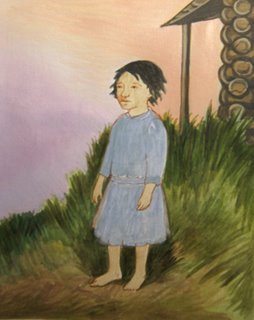
Here I started to layer her skin tone, and add some lighter shades of green to the grass.

Still layering skin tones, also added in the folds of her dress.

Here she was just about done, but something didn't seem right. I decided the tone of her expression needed to be matched by a more somber blue color on her dress, so I painted over the robin's egg color here. Also, the log cabin is a little too perfect, needs to be roughed up a bit.

Here we go, much better!

In this scene Priscilla stands mournful, scared and shocked at what is happening. The text states "Ma turned her anguished face to me, raised one hand in farewell. I lacked the strenth to wave back, tho I 'spect my eyes mirrored her sorrow."
Sunday, December 03, 2006
Jimmy Liao, and Children's Books in Taiwan
Well, I got back from my family reunion vacation to Taiwan last week, and although it was not as relaxing as I hoped it would be, I enjoyed my time there. One of the highlights of my trip, was on my last full day there where I had the opportunity to meet author/illustrator Jimmy Liao (Sound of Colors) for the first time (I wrote about the acquisition of this book here).
I had arranged the meeting with Levin Liao, the Editor-in-chief of Locus Publishing, Jimmy's main Taiwan publisher. I had met Levin when he and his colleagues were in the states a few years ago on business, and since I was going to be in Taipei for a few days at the end of our Taiwan tour, I jumped at the chance to meet with the both of them. My parents were eager to meet Jimmy as well, and so I arranged for them to come along, which was a good thing because they helped serve as the translators between my rusty Mandarin and Jimmy and Levin's halting English.
We were having coffee at Joyce Cafe, and when my parents and I walked in, I saw Jimmy already seated at a table--although I had never met him, I recognized him from his author photos. He was an adorable man, and when I walked towards him he jumped to his feet to greet us, all smiles. I felt awkward at first, and it was frustrating not to be able to communicate fluently and say everything I wanted to say, but it was still a lovely time. We talked about children's publishing in Taiwan, and I commented that when I went to a bookstore a few days before, I was surprised that there were so many American picture books there, in English, not translated. I saw very few picture books of what seemed to be original Taiwanese books. Jimmy and Levin confirmed that this was in fact the case, and that most of the children's books (picture books, at least) in Taiwan were supposed to teach children English. I guess this also explained why, when I went to the Jimmy Liao section in the store (yes, he has a whole section! About three shelves-full) I found so many copies of out edition shelved there!
 I was surprised because our edition is different and very much abridged (80 pages to their 128 pages), and if you could choose between the original book in you native language and a shorter book in English, wouldn't you choose the original?
I was surprised because our edition is different and very much abridged (80 pages to their 128 pages), and if you could choose between the original book in you native language and a shorter book in English, wouldn't you choose the original?
Jimmy also said that most Taiwanese kids liked more cartoony art, and as Japanese manga. He said even his own daughter (who is now 10) was not a fan of his art. As a side note, very few of Jimmy's books are actually children's books--most of them, including Sound of Colors, were created for the adult audience.
The state of children's books in Taiwan shouldn't have been surprising to me. When I was a senior in college, I wrote my senior honors thesis comparing English-language picture books with Chinese-language books, and one of the main thing I discovered is that most of the Chinese-language books seemed intent on teaching something. For example, there was a whole picture book about automatic/electric doors (elevators, stores, etc.) and why you should be careful around them!
I'm glad that they have our books available over there--including a few of Grace's books!
One is a Drummer, Fortune Cookie Fortunes, and I think Kite Flying was tucked in there somewhere.
But at the same time, I'm sad that there aren't more that originate from Taiwan. As has been my experience growing up in the States without many Asian-American characters in the books I was reading, I would think that at least for a child growing up in an Asian country that would not be the case. At least they're seeing Asian role models on television and in movies, and of course in at least some books, but how strange to think that many of the Asian characters in the picture books they were reading were from the States.
On a somewhat related note, as I commented on my personal blog, many Taiwanese (and other Asians) consider it more beautiful to have whiter/paler skin. My aunt who lives in Taiwan, upon seeing me, commented that I was paler this time than I was when I lived there nine years ago, and therefore prettier (and, of course, why wasn't I married?!). I think many of you who have traveled to Asia can attest that there are many skin-whitener products over there. Ironic that while some cultures try to have whiter skin, so many people here try for darker skin by artificial tanners and tanning salons. I guess people will always try to be something they're not.
Saturday, December 02, 2006
how to
 1. Make your folder with corrugated cardboard: two large pieces the same size and a spine. Bind them together with artist tape. The tape should be flexible so the folder can bend.
1. Make your folder with corrugated cardboard: two large pieces the same size and a spine. Bind them together with artist tape. The tape should be flexible so the folder can bend.2. Choose your paper. You will need two sheets of paper that are wider than the height of your folder and one very large sheet of paper appr. double the size of your folder.
 3. Glue your smaller sheets of paper onto right and left hand pieces of your folder. They should cover 1/2- to 1/3 of the cardboard with a generous overhang. The over hand is very important, there should be at least an inch of paper overhanging the cardboard.
3. Glue your smaller sheets of paper onto right and left hand pieces of your folder. They should cover 1/2- to 1/3 of the cardboard with a generous overhang. The over hand is very important, there should be at least an inch of paper overhanging the cardboard. 4. Flip your folder over. You should see the underside of that overhung paper. At each corner, cut a notch. The notch should line up with the edge of the cardboard.
4. Flip your folder over. You should see the underside of that overhung paper. At each corner, cut a notch. The notch should line up with the edge of the cardboard. 5. Fold the corners of the notch into the triangular shape seen in the photo. Glue the triangles down. Repeat for all 4 corners.
5. Fold the corners of the notch into the triangular shape seen in the photo. Glue the triangles down. Repeat for all 4 corners. 6. Fold the flaps (with the glued down corners) over the pieces of cardboard. Glue flaps down.
6. Fold the flaps (with the glued down corners) over the pieces of cardboard. Glue flaps down. 6. Repeat on other side. So far, your folder should look like this.
6. Repeat on other side. So far, your folder should look like this. 7. Flip your folder over. Take your large sheet of paper and cut it to a size that covers all the exposed cardboard with at least an inch of overhang on each side. You want it to overlap the other paper.
7. Flip your folder over. Take your large sheet of paper and cut it to a size that covers all the exposed cardboard with at least an inch of overhang on each side. You want it to overlap the other paper. 8. Glue paper down. The paper should overlap the already glued paper and overhang off the boards.
8. Glue paper down. The paper should overlap the already glued paper and overhang off the boards. 9. Flip folder over. Fold over hanging paper over and glue. It should look like this.
9. Flip folder over. Fold over hanging paper over and glue. It should look like this. 10. Take the remaining paper and cut it so it is about 1/2 smaller on all sides than your folder. It should be large enough to cover all exposed cardboard and overlap the glued paper--but it should NOT overhang.
10. Take the remaining paper and cut it so it is about 1/2 smaller on all sides than your folder. It should be large enough to cover all exposed cardboard and overlap the glued paper--but it should NOT overhang. 11. Glue the paper down, so it looks like this. While the glue is still moist, fold up the sides of the folder so that the spine does not get stiff in the wrong position.
11. Glue the paper down, so it looks like this. While the glue is still moist, fold up the sides of the folder so that the spine does not get stiff in the wrong position.
12. Ta-Dah! You have a folder. Now make some art to go in it.

